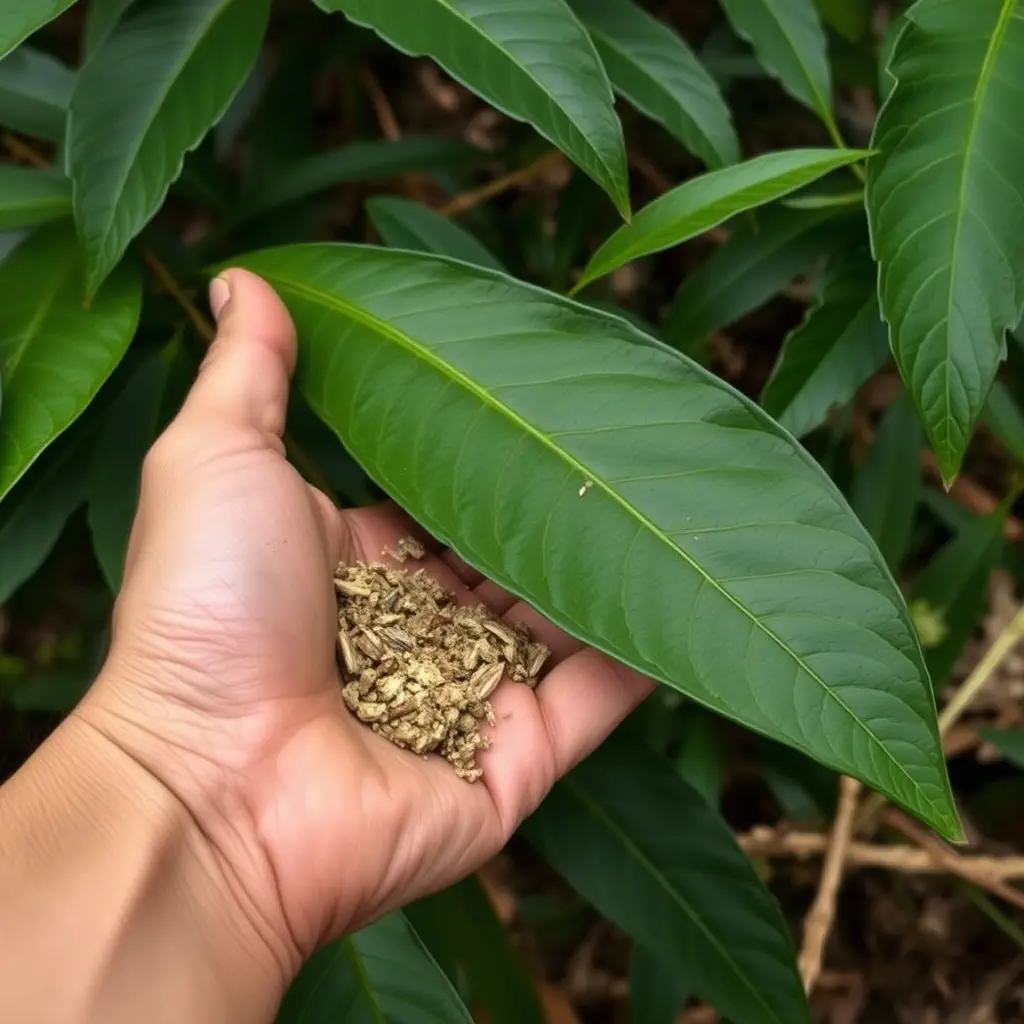Kratom, sourced from the Mitragyna speciosa tree, is gaining recognition as a potential natural remedy for managing the chronic pain, fatigue, and sleep disturbances associated with fibromyalgia. Its efficacy is attributed to its active compounds, mitragynine and 7-hydroxymitragynine, which engage with opioid receptors, offering analgesic benefits similar to traditional opioids but with a lower risk of addiction. While user reports and initial studies are promising for those with fibromyalgia, it's important to approach Kratom cautiously due to its complex interaction with the body. The optimal use of Kratom involves personalized dosing, starting with low amounts and adjusting as needed, while carefully monitoring reactions to prevent tolerance. Professional medical guidance is essential before incorporating Kratom into fibromyalgia management to ensure safe usage and to align with recommended guidelines for best results. Kratom for fibromyalgia support should be considered within a comprehensive treatment plan that includes professional oversight to manage potential side effects and interactions with other medications, thereby promoting overall well-being while minimizing health risks.
Exploring the complexities of fibromyalgia, a condition characterized by widespread chronic pain and stiffness, presents a challenge for both sufferers and healthcare providers. Among the natural alternatives gaining attention for managing these symptoms is Kratom, a plant-based compound that has emerged as a potential support tool. This article delves into the scientific intricacies behind fibromyalgia, elucidating the mechanisms by which Kratom’s unique phytochemical profile may offer relief. Subsequent sections will guide readers through the optimal dosage strategies for harnessing Kratom’s analgesic properties safely and effectively, providing a comprehensive overview of how this botanical substance can serve as a valuable support system in the fibromyalgia journey.
- Unraveling the Mysteries of Fibromyalgia and the Role of Kratom in Management
- Kratom's Phytochemical Composition and Its Potential for Alleviating Chronic Pain in Fibromyalgia
- Navigating Kratom Dosage: Strategies for Safe and Effective Use for Fibromyalgia Symptoms
Unraveling the Mysteries of Fibromyalgia and the Role of Kratom in Management

Fibromyalgia is a complex disorder characterized by widespread chronic pain and tenderness in localized areas of the body, alongside symptoms such as fatigue, cognitive dysfunction, and sleep disturbances. The condition remains enigmatic due to its multifactorial nature, where genetics, environment, and central nervous system dysregulation play significant roles. Unraveling the mysteries of fibromyalgia requires a comprehensive understanding of these factors and their interplay. In this context, Kratom, a botanical derivative from the Mitragyna speciosa tree, has emerged as a potential support mechanism for those suffering from fibromyalgia. Preliminary studies and anecdotal evidence suggest that Kratom may offer relief from the chronic pain associated with the condition. The alkaloids found in Kratom, such as 7-hydroxymitragynine and mitragynine, are thought to interact with opioid receptors in the brain, providing analgesic effects without the same level of risk for dependency as traditional opioids. Additionally, Kratom may influence neurotransmitter levels, potentially aiding in the management of mood and sleep disturbances often accompanying fibromyalgia. As research continues to evolve, the role of Kratom in fibromyalgia support becomes increasingly promising, offering a natural alternative for pain management and overall well-being. However, it is imperative for individuals to consult healthcare professionals before incorporating Kratom into their treatment regimen, considering the nuanced nature of fibromyalgia and the potential interactions with other medications.
Kratom's Phytochemical Composition and Its Potential for Alleviating Chronic Pain in Fibromyalgia

Kratom, a plant originating from Southeast Asia, has garnered attention for its potential therapeutic properties, particularly in the context of alleviating chronic pain associated with fibromyalgia. The phytochemical composition of kratom is rich and complex, with over forty compounds known as alkaloids. Among these, mitragynine and 7-hydroxymitragynine are two key alkaloids that have been studied for their pain-relieving effects. These compounds interact with the body’s opioid receptors, providing relief from chronic pain without the addictive side effects commonly associated with synthetic opioids. Users of kratom report its efficacy in managing the debilitating pain and stiffness characteristic of fibromyalgia, suggesting that it may offer a natural alternative for those seeking relief. Research into kratom’s mechanisms continues to evolve, offering hope for individuals with fibromyalgia who experience chronic pain. As a result, kratom is increasingly being recognized as a viable option for fibromyalgia support, providing an avenue for symptom management that may enhance quality of life for sufferers.
Navigating Kratom Dosage: Strategies for Safe and Effective Use for Fibromyalgia Symptoms

When considering kratom for fibromyalgia support, it’s crucial to approach dosage with both precision and caution. Kratom, derived from the Mitragyna speciosa tree, has garnered attention for its potential to alleviate the chronic pain and stiffness associated with fibromyalgia. Due to individual differences in metabolism and tolerance, a one-size-fits-all dosage doesn’t exist; thus, patients must tailor their kratom intake based on personal responses. Starting with a low dose and gradually titrating upward is a prudent strategy, allowing the user to gauge effects before increasing. It’s also important to monitor how one’s body reacts over time, as tolerance can develop, potentially necessitating dosage adjustments. Consistency in dosing can lead to more predictable pain relief and improved overall well-being. Users should consult with a healthcare provider before integrating kratom into their fibromyalgia management plan, ensuring they receive professional guidance on safe and effective usage. Additionally, adherence to recommended dosage guidelines is essential for minimizing risks associated with kratom use, which may include potential side effects or interactions with other medications. By following a measured approach, individuals with fibromyalgia can explore the benefits of kratom while prioritizing their health and safety.
In conclusion, the exploration of kratom’s phytochemical makeup and its potential for alleviating chronic pain in fibromyalgia patients presents a promising avenue for support. The article has delved into the complexities of fibromyalgia and how kratom may offer relief from the persistent pain and stiffness associated with the condition. With careful dosage consideration, as outlined, individuals can potentially harness kratom’s benefits while minimizing risks. It is clear that kratom holds significant promise for those seeking natural support in managing fibromyalgia symptoms. As research continues to evolve, it is crucial for patients to consult with healthcare professionals when integrating kratom into their treatment regimen. With responsible use and continued scientific investigation, kratom for fibromyalgia support could become a valuable addition to the therapeutic toolkit for managing this challenging condition.






